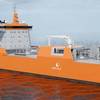Insights: Blaine Dempke, CEO, Markey
Established in 1907 as the Industrial Revolution arrived to Seattle, Markey is the oldest privately-held winch manufacturer in the United States today. The company was formed in the Georgetown District of what later became known as King County, Wash. The Markey sign above its original manufacturing plant, on Horton Street, is still retained, although Markey has since moved to its current facility on 8th Avenue South.
Markey was a major supplier to the U.S. Navy in both world wars, its employment peaking at near 400 in WW2, with 24/7 operations, as the company built winches for jeep tugs and mercy ships especially. At this time its outstanding efforts, in fulfilling orders, were acknowledged at the highest level in the form of the Army-Navy E Award (February 1943). During WW2, Markey built winches for jeep tugs and mercy ships especially.
In 1978, Blaine Dempke and Bob LeCoque joined the company, starting out at the bottom. LeCoque was a helper in the machine shop, while Dempke was a drafter-in-training in the engineering department, later undertaking an intensive business course curriculum at the University of Washington. Both men were promoted as they gained experience, ultimately moving into the top positions: Dempke was appointed president, and LeCoque executive vice president, in 1996. In 2000, the two men bought out the Markey family, which had owned the enterprise since its founding. Now partners, Dempke and LeCoque were united in their mission—of continuing the advance of Markey products’ high quality and engineering excellence. Indeed, these had become the hallmarks of Markey products over many decades. A number of new ideas were implemented to improve the business, thus gaining efficiencies through changes necessary to keep Markey competitive in its second century of operations.
Markey’s technical innovations have won acclaim, garnering a number of industry awards—and perhaps more importantly, repeat business from its faithful customers in the hard-working maritime sector.
Markey announced last year that it lined up outside investment to help grow the company. How did this deal come to be, and what do expansion plans look like?
We didn’t view this so much as a way to help grow the company, although this is certainly happening now, only 12 months after taking those steps. More so, we were committed to taking the steps necessary to ensure continuity and survivability, something of a challenge for what was at that time a small closely-held family business. By this time, my son, Jeff Dempke was more involved in day-to-day operation and helped immensely in our pursuit of the “perfect buyer”, not your typical private-equity buyer looking to maximize profits in the short term but rather a person or company that was in it for the long haul, that recognized there are times that profits have to be set aside in order to get the job done and meet our own high standards. After almost four years of talking to a lot of people, we were fortunate to run into Christian Schiller and Brian Bogen, Seattle-natives themselves, both aware of the marine industry and Markey’s reputation for quality. Six months later we had new majority owners. I continue to hold a minority interest and run the business, along with Jeff, day-to-day. With our new ownership we have access to new resources and skillsets that will serve the company well as we grow and adapt to the ever-changing business demands. We are considering several logical market subsectors for expansion opportunity, such as floating offshore wind.
Note: Markey in early October announced it acquired New Jersey headquartered competitor JonRie InterTech.
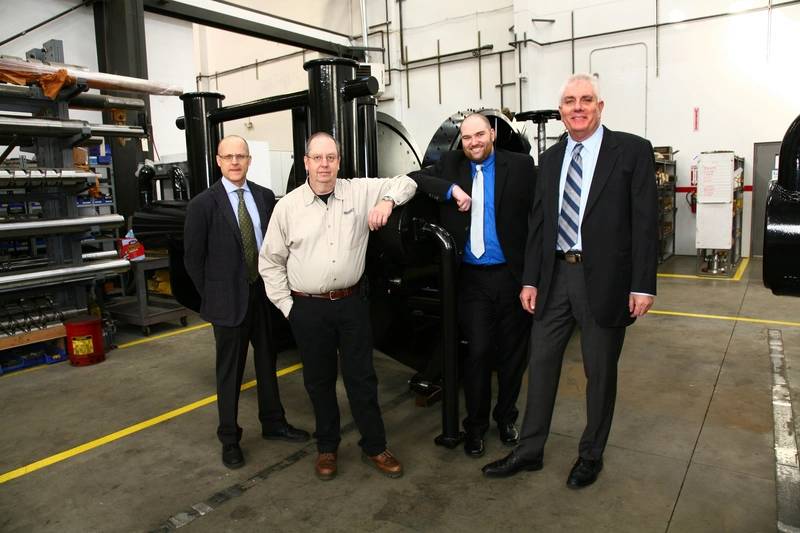 Left to right: Scott Kreis, Vice President of Sales and Engineering; Robert LeCoque, Technical Manager; Jeff Dempke, General Manager, and Blaine Dempke, CEO. (Photo: Markey)
Left to right: Scott Kreis, Vice President of Sales and Engineering; Robert LeCoque, Technical Manager; Jeff Dempke, General Manager, and Blaine Dempke, CEO. (Photo: Markey)
How is the company investing to ensure future success?
I usually tell people, when they ask, that “We’re an engineering firm that happens to build winches.” Our focus is engineered solutions that meet the real-time needs of the crew on the front lines—those operators actually running the boats, we listen carefully to them, and the majority of improvements we’ve made in the last couple decades are a direct result of being immersed in this community. We will therefore continue to invest in those resources that will keep us at the forefront, in the minds of the operators, on board.
How is business today? What types of projects is Markey working on? And looking ahead, where do you see greatest areas of opportunity?
The changes in ownership structure have created opportunity for growth. Among several products of note, our electric and hydraulic bow hawser winches—for harbor-assist and escort—seem to be particularly in demand, especially for customers needing the safest and most reliable means of handling large tankers, as those associated with new LNG plants now under construction. Immodestly put, we sense that in this particular product area, Markey has no peer in the quality and reliability of our bow hawser winches, for which reason we have so many orders of scale.
Looking ahead, tug fleet replenishment, new port terminal expansions, and new vessels associated with offshore wind and the uptick in traditional oil and gas all appear to mark important developments.
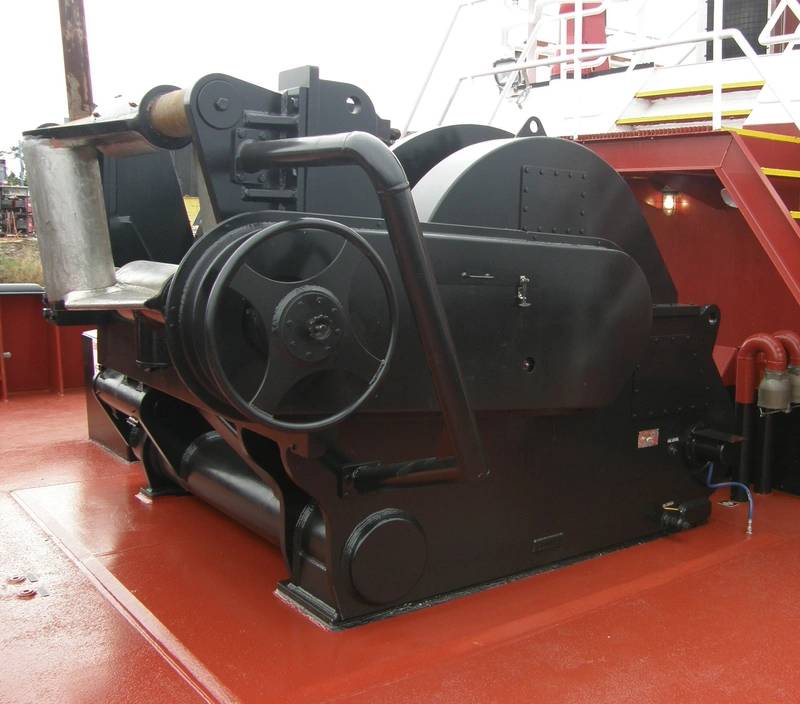 A Markey electric hawser bow winch model DEPCF-52-75 for Moran Towing at Gulf Island Fabricators. (Photo: Markey)
A Markey electric hawser bow winch model DEPCF-52-75 for Moran Towing at Gulf Island Fabricators. (Photo: Markey)
Do you see appetite in the market for new products and innovation? If so, what are customers asking for?
Specific to hawser winches, we very recently responded to requests for a lighter product that had a modified footprint, to satisfy a new tug design with little distance between the forward staple and the winch on the bow. The result was our new Agile Concept—a winch developed for four key customers of ours, featuring a 16.4% reduction in overall weight, a slimming-down of the footprint dimension, inclusion of the gearbox integrally with the winch, and other improvements. This new Agile Concept design is the latest improvement to our Class III hawser winch line, and our customers have responded favorably.
What’s your top, most pressing challenge as Markey CEO, and what’s being done to address it?
Markey, like all other firms in our marine industry, is faced with the reality that young people are simply not entering our industry the way they once did. For this reason, we are paying particular attention to hiring good candidates when they appear. We see that in order to continue a 116-year history of quality and engineering excellence, “new thinking”—including new approaches to old dilemmas—is a vital component of our continued growth as a company. At the same time, I recognize that it may not be so simple to replace older workers, with their experience and skills, as it once was. Markey this year has expanded staff by over 10%, younger people being the main component, and we are seriously considering several small business acquisitions to expand our offerings to the market.
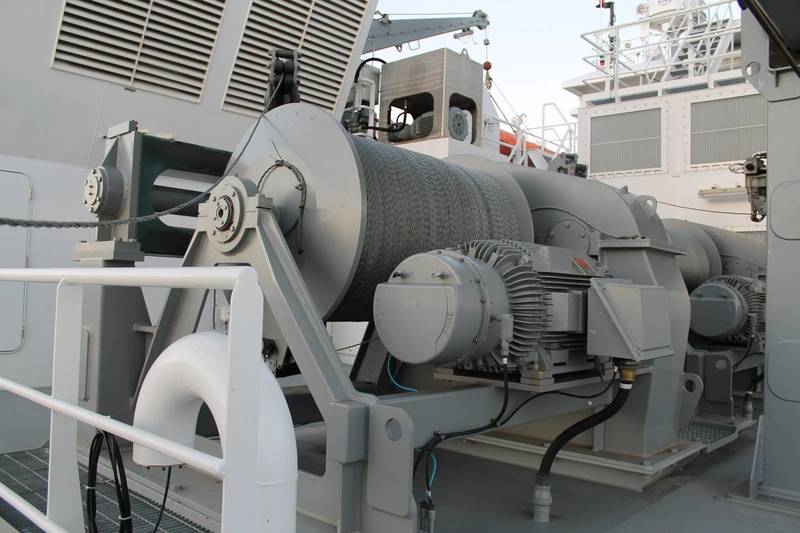 A Markey CAST-6 oceanographic winch. (Photo: Markey)
A Markey CAST-6 oceanographic winch. (Photo: Markey)
Over the course of your career, what have been some of the biggest or most impactful changes to take place at Markey—or in the marine business in general?
The aforementioned change in ownership structure, just a year ago, marks a unique event in Markey’s 116-year history. Speaking technically, the successful launch of Markey’s Asymmetric Render/Recover in 2004, which forever changed the world of winch control, was an unforgettable game-changer on my watch. “Render/recover” (as on a tugboat) has since become a standard term in the English technical parlance. The steady improvements in electric winching over the recent decades, including regenerative functions and improvements in control, have been unmistakable and key milestones for the industry.
Several tools have allowed the operator improved ease of use. For example, the 1990s brought our first line-tension displays, allowing operators to view actual line tension from the wheelhouse.
Many of our innovations in fact date from the 1990s, during which time we had Barry Griffin, manufacturer’s representative, working at Markey. Barry was especially keen to listen carefully to the operators, spending an astonishing 5,342 hours aboard customer vessels. He was responsible especially for the development of our first hydraulic render-recover controls, working steadily to make them ergonomically sound. Decades later, today’s render/recover controls for Markey’s Class III winches bear a remarkable likeness to the first control systems Barry developed.
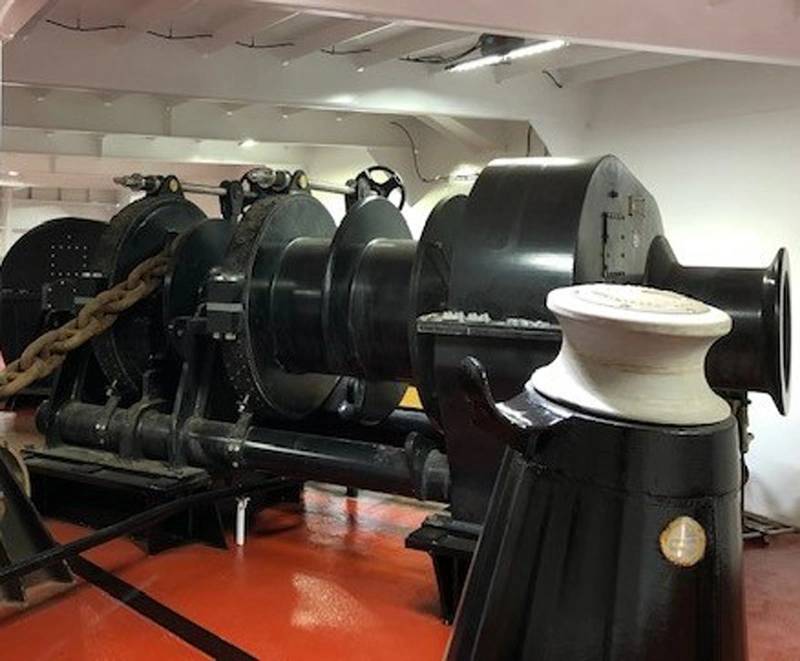 Markey mooring winches aboard a Crowley vessel. (Photo: Markey)
Markey mooring winches aboard a Crowley vessel. (Photo: Markey)








